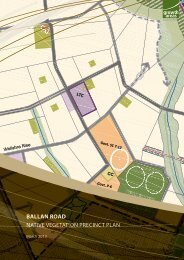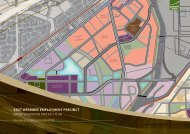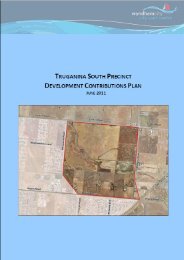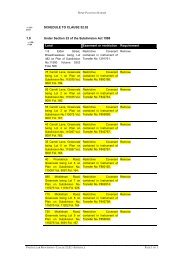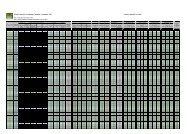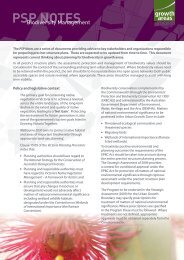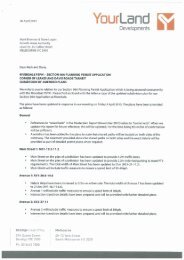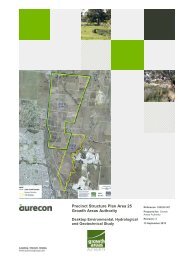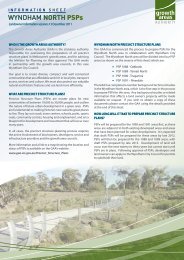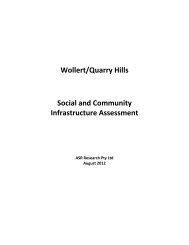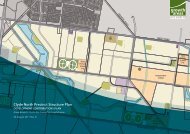Transport Modelling - Growth Areas Authority
Transport Modelling - Growth Areas Authority
Transport Modelling - Growth Areas Authority
You also want an ePaper? Increase the reach of your titles
YUMPU automatically turns print PDFs into web optimized ePapers that Google loves.
Northern <strong>Growth</strong> Corridor <strong>Transport</strong> <strong>Modelling</strong><br />
Table 1: Land use input summary, 2011 and 2046<br />
2011 2046<br />
Input<br />
Hume Whittlesea Hume Whittlesea Mitchell<br />
Population 176,687 163,172 438,418 366,029 190,859<br />
Households<br />
Retail<br />
57,137 54,660 151,170 133,466 66,036<br />
Employment<br />
Total<br />
7,325 4,599 31,464 13,588 6,834<br />
Employment<br />
Primary<br />
85,221 39,032 177,435 114,594 18,358<br />
Enrolments<br />
Secondary<br />
17,384 14,038 32,538 26,628 8,789<br />
Enrolments<br />
Tertiary<br />
11,985 9,018 29,311 17,858 9,600<br />
Enrolments 37,865 12,026 47,970 15,653 ‐<br />
2.2.1 Melbourne Airport<br />
VITM includes a separate module (MATRS) to forecast trips generated by air<br />
passengers to and from Melbourne Airport. The number of trip attractions and<br />
productions per day assumed by the MATRS module in 2046 is 234,496 persons;<br />
this represents a conservative long-term growth rate of 2.1% p.a since 2011. It is<br />
noted that PTV is currently planning an overhaul of the MATRS module to better<br />
incorporate future air passenger forecasts. Once these changes are complete, we<br />
recommend that they be applied to the Northern <strong>Growth</strong> Corridor model.<br />
In the interim, we have updated one input to MATRS – the assumed time period<br />
split of air passengers – to better match observed passenger time profiles at the<br />
airport.<br />
The forecast number of employees at the airport remains unchanged at 32,783.<br />
2.3 PUBLIC TRANSPORT<br />
In general the public transport service patterns included in the model were taken<br />
from DOT’s 2031 reference case along with a selection of expected improvements<br />
to the network as detailed in the following sections. The 2031 reference case was<br />
used as it was seen to contain a more realistic set of assumptions about service<br />
frequencies, particularly buses.<br />
2.3.1 Rail<br />
Two metropolitan train lines currently serve part of the study area (Craigieburn and<br />
Upfield lines) and two regional lines pass through the study area (Bendigo and<br />
Seymour lines).<br />
PAGE x




